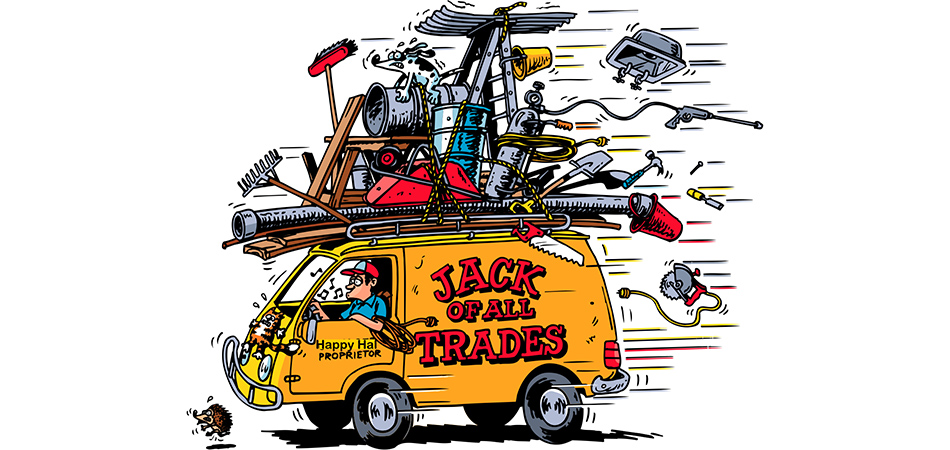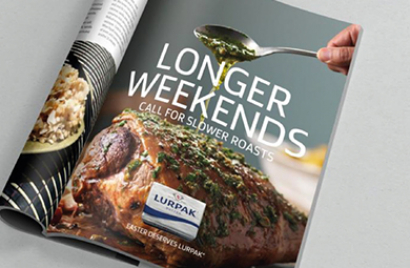
Dr. Martens champions sustainable fashion
Genix Nappa, a new material made of leather offcuts, aims to reduce waste
We’re all creative people, and we all want to ensure that we deliver the best work that we can. We need to get back to collaborating and building ideas, allowing them to grow and flourish.


We’re all creative people, and we all want to ensure that we deliver the best work that we can. The innovative ideas clients will love us for, campaigns and events that people enjoy engaging with, and most importantly, campaigns we enjoy creating, the ones that make a difference.
The work an agency did used to be easy to define. It was marketing in various formats propelled into people’s daily lives. The process of making these campaigns also used to be easy to define. We all knew the rules, and we all knew what our job titles actually meant. As departments in an agency, we knew what our roles were, and as agencies we knew how to work together. But along the way, clients' needs started to change.
As a result, more and more agencies started to compete for an entire brand’s marketing budget, which in turn meant teams had to become more ‘integrated’. This resulted in agencies becoming more innovative as people got immersed in their new and different roles. Generating constant, captivating and exclusive content became the main priority. Sounds great, right?
Well, I’m not so sure. We’ve all heard the saying ‘Jack of all trades…’
Budget competition, focus on ROI, and many other factors ushered in the dawn of the hybrid agency. The lines between disciplines became increasingly blurry. At the same time, opportunistic non-agency players started inching their way into the marketing services arena. As clients demanded newly bundled support across commerce, digital content and media distribution, agencies started to change in order to meet this challenge (or make the most of an unexpected opportunity). Suddenly, agencies that were experts in a certain field, put themselves, or were thrust into new areas by others. Ideas got confused and compromised by the limits and knowledge of a particular agency.
Rather than continuing to play nice and collaborate with each other, barriers were raised and everyone became a lot more guarded.
There are many reasons why we don’t collaborate effectively, but there is one major issue that I believe restricts us more than any other. It can be found at any level, from the agency attitude down to the individual creative and it’s not money.
It’s the perceived ownership of an idea. If an individual guards all of their ideas, and works on them in isolation, they lose the opportunity for it to grow into something bigger, something you never would have expected when you first set out. This unwillingness and reluctance to allow other people into the idea process runs the risk of hampering our ability to produce work that people and clients care about. This is bad for clients, bad for agencies, and bad all round. Given the enormous potential for creative output in agencies, the importance needs to be refocused around delivering it to audiences in the best way, rather than squabbling over budget like dogs with a bone.
At the nexus of this continually evolving mashup of business operations and marketing, our clients need partner agencies to help them get out the correct messages rather than ones that are compromised by the limitations of a particular agency.
We need to get back to collaborating and building ideas, allowing them to grow and flourish.

A good example of the benefits of inter-agency collaboration is the work we do for one of our clients Lurpak. The Key Seasons campaign that we launched earlier this year shows how working positively together can lead to richer experiences and work. Our brief was to create a global shopper campaign that was born out of the ATL platform ‘You’re not a cook until you cook’ and that got food lovers to choose Lurpak for their Easter and Christmas cooking extravaganza.
We were able to translate the beautiful ATL campaign into something that empowered shoppers and put them at the heart of the action without compromising what other agencies had developed.
Whilst the ATL inspired and captured the imaginations of the target audience, we needed to take the core idea and create something that would excite consumers during key seasonal shopping periods and inspire them to trade up and use Lurpak. Our idea was to flip the ATL creative idea so that we could transport consumers into the scenes. With our unique photography capturing the honest yet aspirational moments, our toolkit offered audiences a unique view which worked perfectly alongside a more direct call-to-action.
Agency collaboration can work effectively if the right structures and processes are put in place. The success of this truly integrated campaign is testament to inter-agency collaboration. In terms of how creative agencies can cope with being more prolific, my advice would be that it’s time to focus on the work and collaboration again and leave egos behind in favour of a more open way of working.


Dan Claxton has been the Creative Director of BD Network since 2012. Having joined the company as an Art Director in 2007, Dan has worked on all of their key accounts across every single channel. During his time at BD, his work has won various awards including MAA, IPM, FMBE, Event and the Blade Awards. In 2014 he had the honour of judging the MAA awards. Dan’s spare time is mainly taken up entertaining his two young sons, but when he does have a free moment he enjoys painting, reading and cooking but not at the same time. He also has a massive cat called Elvis.
Looks like you need to create a Creativebrief account to perform this action.
Create account Sign inLooks like you need to create a Creativebrief account to perform this action.
Create account Sign in